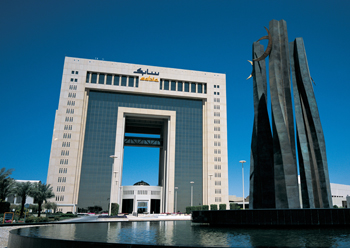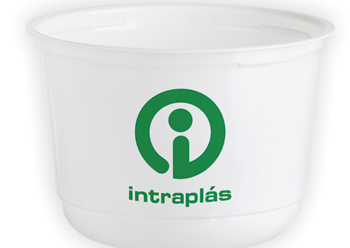
 Sabic: surge in profits despite challenges
Sabic: surge in profits despite challenges
With its healthy performance year to date, Saudi Basic Industries Corporation (Sabic), one of the world’s largest petrochemicals producers, with vertically integrated operations, state-of-the-art global facilities and a top market position for its products, has clearly established its position as the titan of the chemicals industry.
Not only was the chemical major’s performance in 2021 exceptional but its financial results for the first quarter for the year 2022 were unprecedented too. Yet, the Riyadh-based chemicals major says it is facing “numerous challenges” related to supply chain woes as well as higher production costs while high inflation could end up denting end demand, as per an ICRA report.
 |
|
Yousef Al-Benyan |
According to Sabic CEO Yousef Al-Benyan, the war in Ukraine has not “strongly and directly” impacted Sabic’s operations, adding the company had managed to avoid the worst of the supply chain disruption caused in Europe by Russia’s invasion.
Speaking at Sabic’s post-earnings announcement conference, he added however that during the January-March production costs – on the back of higher energy prices – and supply chain costs had risen sharply.
“We are paying close attention to supply chain costs, as well as production costs. Supply chain-related costs increased by 30 per cent on average during the first quarter, compared with the fourth quarter of 2021. Year on year, costs increased by 50-60 per cent,” said Al-Benyan.
“Sabic did not have any direct exposure to the Russian or Ukrainian markets. Nobody welcomes the war, and the impact it will have will be negative for energy markets but also for the key agricultural nutrients [fertilizers] of which Russia and Ukraine are strong producing countries.”
STRONG RESULTS
The company reported a 33 per cent surge in profits for the first quarter, buoyed by 40-per cent growth in sales to SR53 billion ($14 billion).
Al-Benyan highlighted that this year’s results are “unprecedented,” and reiterated that solid figures were supported by enhanced diversification of products, higher oil prices and stronger global reach, with Sabic’s latest ExxonMobil venture in the US Gulf Coast contributing largely to the results.
 |
|
Sabic’s key priorities in 2022 |
“In 2022, Sabic will remain focused on delivering its growth strategy, achieving operational resilience and meeting our ESG commitments, while at all times maintaining a strong balance sheet,” the CEO added.
Still, a drop in demand on the back of higher inflation and interest rates as well as rising feedstock costs and supply chain woes remain a challenge.
“The average of the cost increased by 3 per cent compared to the fourth quarter in 2021, and by 90 per cent from the first quarter of 2021,” Al-Benyan noted.
According to the executive, the global economic slowdown is anticipated to weigh on demand for chemicals in the second half.
BLURRIER OUTLOOK
Despite healthy performance year to date, Al-Benyan conceded that high inflation caused by higher commodity prices could end up denting end demand as consumers become more selective on their spending as their budgets get squeezed.
Higher interest rates to rein in inflation could also make borrowing more expensive, also deterring spending on big-ticket items key for the petrochemicals industry, like automotive or construction.
This, in turn, would have an effect in petrochemicals selling prices, he added. According to Sabic’s price index its selling prices have increased over the past quarters at a faster pace than those for crude oil.
“Our outlook contemplates a slowdown of the world economy. And I think inflation will play an important role and could impact demand for products, and thereby [selling] prices will be affected accordingly,” said Al-Benyan.
“Until the second half of 2022, we will be facing pressure because of the economic slowdown, inflation, [and] the disparity of interest rates [across the world].”
The CEO added that Sabic’s stake in Switzerland-headquartered chemicals producer Clariant remains “strategic” for the future position of the company within the specialty chemicals sector.
According to Clariant’s 2020 annual report, Sabic’s stake in its capital structure stands at 32.22 per cent; Clariant is yet to release its 2021 annual report after the company postponed its publication while investigating accounting issues, now concluded.
“Clariant is a part of Sabic’s strategy in our specialised business – we have been paying attention to Clariant and it remains a key part for our future strategy,” said Al-Benyan.
SIGNIFICANT SCALE
Sabic is one of the world’s largest petrochemicals producers, with vertically integrated operations, state-of-the-art global facilities and a top market position for its products.
According to Fitch, Sabic stands out among its ‘A’ rating category peers as it is a commoditised chemical company, albeit one with a leading cost position and access to low-cost feedstock in Saudi Arabia, which underpins strong profitability and robust cash flow generation through the cycle. Its scale, historically low leverage, and access to competitively priced feedstock underpin its ‘A’ rating.
The only other Fitch-rated chemical company is German multinational BASF SE., one of the world’s largest chemical companies, which benefits from significant scale, vertically integrated operations across the value chain, considerable diversification across products and end-markets, and market-leading positions. It is more specialised and has high barriers of entry for many of its product lines but does not have Sabic’s feedstock advantage.
According to Fitch, Sabic’s subsidised methane and ethane prices in Saudi Arabia underpin the company’s cost advantage over non-integrated naphtha-based petrochemical producers. This advantage shrinks when oil, and therefore naphtha, prices are low. This was the case in 2020 when Brent oil price averaged 36 per cent below the 2019 level of $65/bbl amid weak GDP and demand. This advantage will, however, resume in 2022-2023 as oil prices increase due to the ongoing war in Ukraine. We therefore expect Sabic’s cost advantage and profitability to remain solid until oil prices drop materially from 2022 levels.
Clearly, Sabic’s diversified business model with a broad portfolio of products is the biggest strength and the core competency of company that lends Sabic a competitive advantage over its competitors.
Sabic is the titan of the chemical industry due to its impeccable strengths like the market leader in the manufacturing of many products, comprehensive product portfolio, robust support from the Saudi government, strong global footprint, strong R&D, focus on innovation, rigorous investments in technology and more. However factors like focus on higher volatility commodity chemicals, weak supply chain, etc are weaknesses of Sabic that could hinder growth, smooth functioning and profitability of the company.


